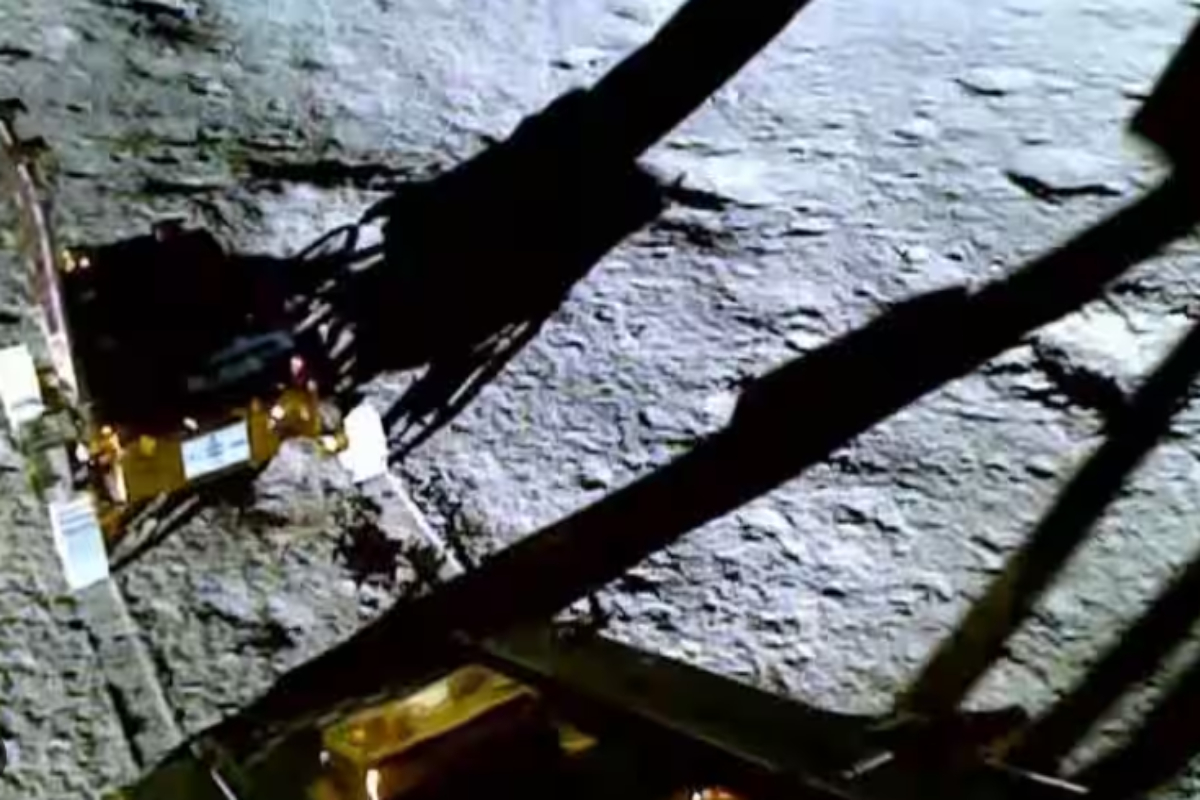ISRO: The moon rover Pragyan from India has once again used a different method to confirm the existence of sulphate and other elements at the lunar south pole. The discovery was made as part of the current Chandrayaan-3 expedition, according to the Indian Space Research Organisation (Isro). Sulfur’s presence was verified by the Laser-Induced Breakdown Spectroscope (LIBS) instrument on board Pragyan. The elemental makeup of the lunar surface close to the south pole was for the first time ever measured in-situ. Another onboard instrument, the Alpha Particle X-ray Spectroscope (APXS), which also identified sulphur along with other minor elements, further supported the LIBS instrument’s findings.
Pragyan Rover’s Techniques Detect Sulphur on Lunar Surface
Taking to microblogging site X (formerly Twitter), Isro wrote, “Another instrument onboard the Rover confirms the presence of Sulphur (S) in the region, through another technique. The Alpha Particle X-ray Spectroscope (APXS) has detected S, as well as other minor elements. This finding by Ch-3 compels scientists to develop fresh explanations for the source of Sulphur (S) in the area: intrinsic?, volcanic?, meteoritic?,……?.” Isro also shared a video of the Chandrayaan-3 rover and wrote, “The video shows an automated hinge mechanism rotating the 18 cm tall APXS, aligning the detector head to be approximately 5 cm in proximity to the lunar surface. PRL, Ahmedabad has developed APXS with support from PRL, Ahmedabad. URSC, Bengaluru has developed the deployment mechanism.”
Scientists Ponder Origins of Sulphur Following Pragyan Rover’s Discovery
Scientists are now challenged with coming up with novel explanations for the origin of sulphur in the area in response to these observations, which have aroused their curiosity. The causes might be anything from volcanic activity, meteoric impact, or even something intrinsic to the makeup of the moon. Several tests have been carried out by the Chandrayaan-3 mission, which safely arrived on the moon on August 23, 2023, to learn more about the lunar south pole. India became the fourth country to set foot on the moon and the first to reach its south pole during the mission, which has already made history. Since their touchdown, the Vikram Lander and Pragyan rover have been exploring the area and producing important findings that will help us better comprehend the moon’s history.
Chandrayaan-3’s Triumph as India Makes Landmark Touchdown Near South Pole
On July 14, 2023, the Chandrayaan-3 mission was launched by the Indian Space Research Organisation (ISRO). The Vikram lander, which was carrying the Pragyan rover, made landfall on the region of the lunar south pole on August 23, 2023, after the spacecraft entered lunar orbit on August 5. With this, India became the first nation to successfully land close to the lunar south pole and the fourth nation overall.
Keep watching our YouTube Channel ‘DNP INDIA’. Also, please subscribe and follow us on FACEBOOK, INSTAGRAM, and TWITTER.
